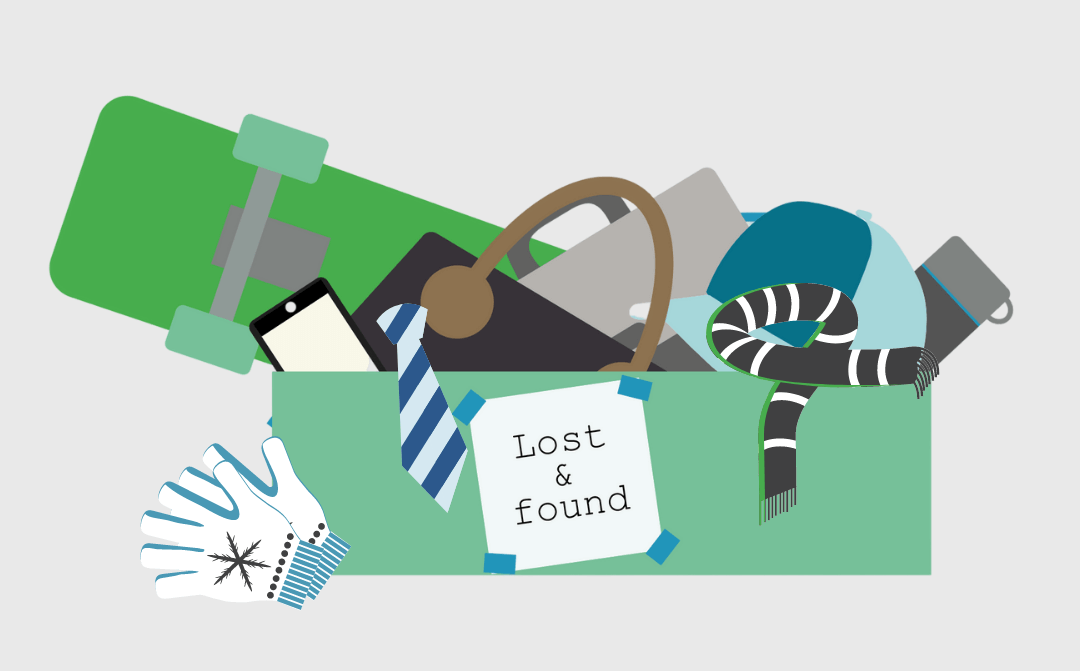New findings suggest a staggering 90 million items lost in UK schools will be sent to landfill this school year
- Children permanently lose an estimated 9 items every school year on average
- School jumpers are the most commonly lost items with almost 25% of children losing theirs. Books, stationery, socks and gloves come in as the top 5 lost items
- Replacing lost property costs parents approximately £2,000 during their child’s school life (bad news for those with big families!)
What impact has COVID-19 had?
COVID-19 has presented a brand-new pressure within schools. Pupils are now in ‘bubbles’, everything from the drop-off to lunchtime is staggered (and chaos) and even the normal lost property process can no longer operate as usual.
What’s changed for lost property?
Two main things. Items can no longer be kept for the normal amount of time safely in the lost property box. Plus, parents are unable to enter the school and check the lost property for their children’s belongings.
Therefore, more items are getting thrown away, sooner, and less are being returned to forgetful owners.
When we consider that there are 10 million school children in the UK, this amounts to a staggering 90 million lost items being thrown away.
Worryingly, these items are reportedly not being disposed of ethically or sustainably; they are being sent straight to landfill.

Part of a much larger problem
This statistic seems incredibly shocking as it is. However, we must consider is that this is only part of a much larger problem
When it comes to clothing, according to their Valuing our clothes report, WRAP (The Waste and Resources Action Programme) reports that an estimated £140 million worth of clothing goes to landfill each year. Obviously lost property is not the only contributor to this huge number, however it does contribute to the problem if not handled appropriately.
More than just school jumpers
What’s more, we lose far more than just clothing. Simply think of all the other places you might lose all sorts of items from electronics to water bottles to credit cards. We lose things at hotels, on public transport, in taxis, shopping centres, universities, theme parks, visitor attractions, arenas and many more.
Think about how many people use all these services every year and how much lost property is likely to pile up as a result.
For the majority of organisations, the return rate is unfortunately not 100%. Items of low value are forgotten about or quickly replaced, leaving the item sitting in lost property unclaimed.
When it is time to clear the lost property box, what do organisations do with the items?
A helpful resource
This ties in very nicely with our blog from a couple of weeks ago – How sustainable is your current lost and found process? Here, we suggest some proposed ways of disposing some of the most commonly found items.

Let’s fix the lost property problem earlier on…
Prevention is better than cure. NotLost believes we can infiltrate the system earlier to ensure fewer items need to be recycled or disposed of in the first place.
For example, it’s preferable that an individual gets their original item back again rather than having to buy a new item, whilst the original item is discarded. The process of manufacturing and buying a new item carries both a huge monetary and environmental cost.
…with a digital lost property solution
Therefore, implementing a reliable end-to-end process when it comes to lost property is the best solution.
If found items are logged onto a platform using images, potential owners can more easily identify if it is their item or not. Teams in charge of lost property do not have to rifle through lost property to find potential matches – the system matches items for you.
As a result, lost property can be store safely away until a match is found, whilst owners can proactively try and get items back.
The issue of not being able to enter certain venues during this time is eliminated if an organisation is able to offer postal returns.
If the item sits unclaimed for a certain period of time, the system can alert you that it’s time to dispose of it. Plus, NotLost are proud to offer clear, bespoke advice regarding how best to dispose of items and can connect you to appropriate partners.
In conclusion
We are aware this is a problem. But we are passionate about fixing it by implementing changes in the lost and found process.
Harnessing technology, such as NotLost’s digital lost and found software solution can successfully reduce the impact of lost property on the environment whilst returning more items to owners.
